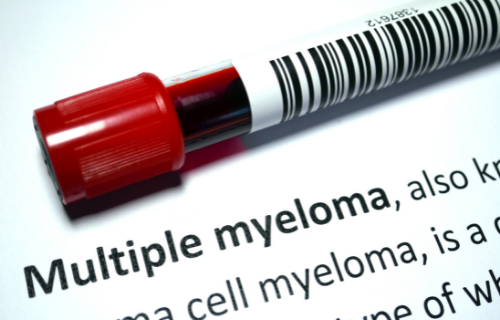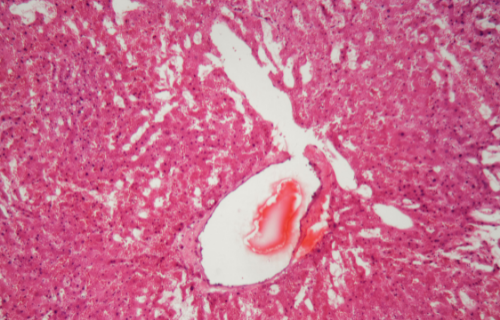Difference Between Amyloidosis and Multiple Myeloma

Introduction
Amyloidosis and multiple myeloma are both conditions where the plasma blood cells become diseased. Although these conditions are unique and have their own mechanism of action, both results in organ damage and are seen as very serious.
Let us delve into these diseases and gain a better understanding of what makes them different!!
Definition and Pathophysiology
Amyloidosis is a disease where the body’s bone marrow becomes cancerous and produces abnormal antibodies referred to as “light chains”. This changes the body’s ability to fight infections because of a damaged immune system. The abnormal antibodies (light chains) enter the bloodstream, where they then circulate and deposit themselves into various organs. The affected organs then become damaged.
Multiple myeloma is the occurrence of cancer in the plasma cells. More specifically, it happens when plasma cells change to a cancerous state and grow uncontrollably. The uncontrollable growth overcrowds the body’s regular blood cells in the bones and allow too much protein inlet into the bones and circulatory system. This then builds up within the body and organs, leading to organ damage.
Potential Causes or Risk Factors
The potential causes and risk factors for amyloidosis are difficult to predict. As discussed above, when the abnormal light chain proteins in plasma cells enter the circulation system (blood stream), they deposit into vital organs throughout the body. This can be due to:
- Genetic or hereditary components (usually hard to predict)
- Chronic diseases involving specific organs (such as chronic kidney disease)
- Types of cancers (of which multiple myeloma is included in 10-15% of cases)
- Cell mutations
- Rare infections
Multiple myeloma, on the other hand, has no clear answers behind what causes the disease to occur. There are however certain risk factors that expert physicians have identified to increase the likelihood of getting it. These include:
- Being older than 65 years of age
- Male genders
- Family history of the disease
- Being overweight or obese
- Having been in contact with certain types of chemicals
- Exposure to high levels of radiation
- The African American genetic group

Symptoms
Symptoms of amyloidosis vary and depend on which tissue or organ has been affected by the deposits. They can be subtle to detect and vary. Specialists have identified general symptoms of amyloidosis, and these possibly include:
- Changes in the colour of your skin
- Pain in the joints, a weak hand grip
- Feeling severely fatigues and weak
- Rapid weight loss and constantly feeling full
- Feeling short of breath, a tingling in the lower limbs and a swollen tongue
- Low red blood count indicating anaemia
Multiple myeloma has more specific symptoms. In early stages they might not be noticeable, but as time goes on, they may include:
- Pain in the bones
- Upset stomach or a constipated digestive system
- Feeling confused, weak, and tired
- Feeling weakness in the upper and lower limbs
- Constant presence of infections
- Always feeling thirsty
Diagnosis
Diagnosing the occurrence of amyloidosis in the affected organs specifically can be done through biomarker tests. These include measuring the changes in the size of the organ and its functions, measuring levels of specific proteins in the blood, in cerebrospinal fluid, and on scans (MRI, CT, PET). A panel of blood tests is also done to identify blood abnormalities.
Multiple myeloma is usually diagnosed through blood tests specifically looking at the level of calcium in your blood, you red blood cell count for anaemia, kidney problem indicators and looking for high and low specific total protein in your blood.
Treatment
Unfortunately, there is no cure for amyloidosis. Treating amyloids depends on where they occur. The only way to completely abolish amyloids from being produced is to undergo intensive chemotherapy to destroy abnormal blood cells in the bone marrow responsible for amyloid production. There is no other way to treat amyloids and the disorders caused by the occurrence of them are treated on a specific basis.
Multiple myeloma is treated based on its grade (high, intermediate, and standard). Once a patient has symptoms, treatment may include medications such as chemotherapy, a stem cell transplant procedure, and efforts to keep up bodily nutrition.
Table of comparison between Amyloidosis and Multiple Myeloma

Summary
Amyloidosis and multiple myeloma both occur as a result of plasma cell abnormality, occasionally occurring together. Both diseases have similar symptoms, making them tricky to diagnose correctly. With treatment, there is hope for a prolonged life expectancy and in the case of multiple myeloma, remission.
FAQ
Can amyloidosis be mistaken for multiple myeloma?
Amyloidosis can indeed be mistaken for multiple myeloma. This is because of the similarity in symptoms associated with the affected organs and the abnormal blood results. Recognizing the difference is crucial for the patient, as medical treatment doses differ and can cause complications if incorrect.
Is amyloidosis worse than multiple myeloma?
The prognosis (or life expectancy) of patients with amyloidosis and multiple myeloma differs from person to person. Each case has the same causative mechanism, but each patient is different. The two diseases are both serious and cause organ damage. Amyloidosis often causes more organ damage, but multiple myeloma often causes amyloidosis to occur with it. Therefore, it is not a straight-forward answer and both diseases are equally as life-threatening.
Does myeloma cause amyloidosis?
It is rarely seen (about 10-15% of the time), multiple myeloma associated amyloidosis can occur. It is a rare cause but when it does happen it is often hard to diagnose because of the similar symptoms between the two conditions. Other research says amyloidosis is a commonly occurring complication in multiple myeloma patients. Either way, unfortunately, this potentially increases the death rate of patients.
Why is amyloidosis not multiple myeloma?
Although amyloidosis and multiple myeloma have a common root cause (malignant plasma cells), the way the cells behave is different in both conditions. In amyloidosis the malignant plasma cells do not accumulate in the bone marrow itself, they deposit throughout the body where they then accumulate and cause consequences. In multiple myeloma, the malignant plasma cells accumulate in the bone marrow and cause direct destructive consequences.
- Difference Between a Cochlear Implant and Normal Hearing - October 4, 2022
- Difference Between Obstructive and Restrictive Spirometry - September 11, 2022
- The Difference Between White Box and Black Box Testing - September 11, 2022
Search DifferenceBetween.net :
Leave a Response
References :
[0]Bahlis, N and Lazarus, H. “Multiple myeloma-associated AL amyloidosis: is a distinctive therapeutic approach warranted?” Bone Marrow Transplant, vol. 38, 2006, pp. 7–15
[1]Corre, Jill. “Why is amyloidosis not multiple myeloma?” Blood, vol. 138, no. 17, 2021, pp. 1514-1515.
[2]Xu, J., Wang, M., Shen, Y., Yan, M., Xie, W., Wang, B., Liu, H and Cen, X. “Effects of Amyloid Light-Chain Amyloidosis on Clinical Characteristics and Prognosis in Multiple Myeloma: A Single-Center Retrospective Study”. Cancer Management Research, vol. 13, 2021, pp. 1343-1356
